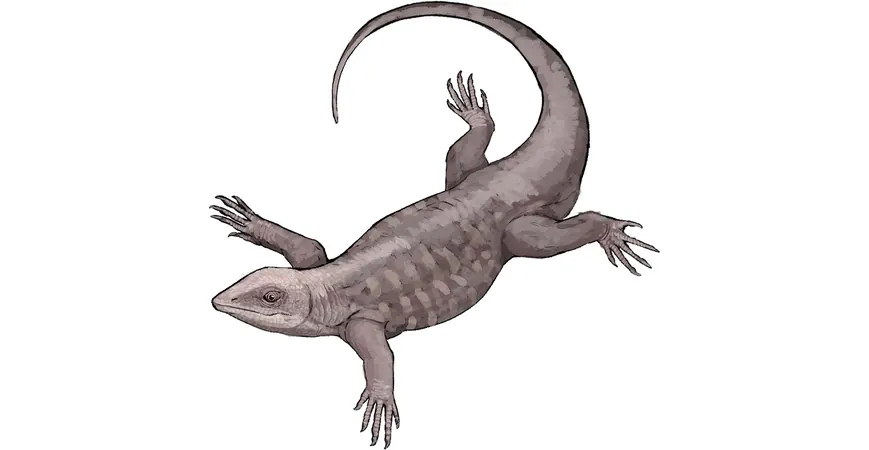
Ancient Tree-Climbing Lizard Relative Revealed in Stunning New Research
2025-04-16
Author: Emma
Unveiling a 166-Million-Year-Old Mystery
A groundbreaking study has flipped the narrative on Marmoretta oxoniensis, a tiny reptile from the Middle Jurassic period that lived around 166 million years ago. Once thought to be a semi-aquatic creature roaming ancient lagoons, new research showcases its surprising arboreal lifestyle.
Fossils from a Time of Change
Fossils from this remarkable period, spanning 174 to 161 million years ago, are incredibly rare, particularly when it comes to small reptiles that coexisted with dinosaurs. While the limelight often shines on the massive dinosaurs, these fragile fossils offer tantalizing insights into the lesser-known creatures of that era.
The Evolutionary Significance of Marmoretta
Dr. David Ford, a seasoned expert in early reptiles, helmed the research. He emphasizes the importance of understanding not just the existence of these species but their ecological roles. "Studying Marmoretta allows us to piece together the evolutionary puzzle of reptiles during critical divergences," he states.
Revolutionary Scanning Techniques Uncover Secrets
Previously believed to be simple remnants, these fossils are revealing more than ever thanks to modern imaging technology. Techniques like CT scans and synchrotron radiation allow scientists to explore the intricacies of these delicate fossils without damaging them. Ford notes that traditional preparation methods often destroyed crucial information about their ecology.
Marmoretta's Climbing Adaptations
Initial findings from the research suggest that Marmoretta’s skeletal structure was not suited for swimming. Instead of flat fingers typical of aquatic reptiles, it possessed long, curved finger bones, ideal for grasping tree branches. Its stiff spine further indicates specialization for climbing, hinting at a life spent among the treetops.
A New Methodology for Researching Early Reptiles
The research team conducted innovative statistical analyses comparing Marmoretta’s bones with those of modern reptiles. Their findings suggest that this ancient lizard relative spent significant time in trees, likely to escape ground-dwelling predators, a tactic that may explain the success of lizards today.
The Ecological Implications of Arboreal Living
Adapting to tree life may have been a pivotal strategy for survival, echoing similar survival tactics used by small mammals during the Triassic period. As researchers dive deeper into the lives of early reptiles, our understanding of their vast ecological impact continues to evolve.
A Promising Future for Reptilian Research
As advancements in technology pave the way for more discoveries, our grasp of reptilian history is becoming richer. This ongoing research holds the potential to illuminate the myriad ways these reptiles thrived on our planet, offering a fascinating glimpse into the past.









 Brasil (PT)
Brasil (PT)
 Canada (EN)
Canada (EN)
 Chile (ES)
Chile (ES)
 Česko (CS)
Česko (CS)
 대한민국 (KO)
대한민국 (KO)
 España (ES)
España (ES)
 France (FR)
France (FR)
 Hong Kong (EN)
Hong Kong (EN)
 Italia (IT)
Italia (IT)
 日本 (JA)
日本 (JA)
 Magyarország (HU)
Magyarország (HU)
 Norge (NO)
Norge (NO)
 Polska (PL)
Polska (PL)
 Schweiz (DE)
Schweiz (DE)
 Singapore (EN)
Singapore (EN)
 Sverige (SV)
Sverige (SV)
 Suomi (FI)
Suomi (FI)
 Türkiye (TR)
Türkiye (TR)
 الإمارات العربية المتحدة (AR)
الإمارات العربية المتحدة (AR)